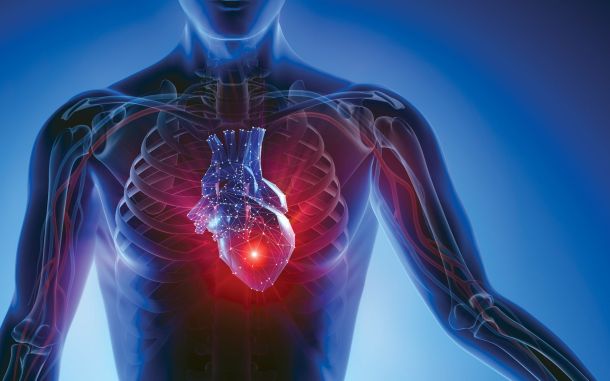Mathematical Harmony in the Bird’s Body Structure

In This Article
-
It’s not just wings that allow birds to fly; they have many physical features that work together to make flight possible. They need lightweight features, a streamlined body, and a rigid skeleton to provide firm attachments for powerful muscles.
-
With each flapping of its wings, a bird's body naturally goes up and down almost like a spring.
Sometimes I want to be a bird and fly.
Sometimes I want to be a fish and swim.
I don't know how to fly or swim.
Right now?
I'm counting again, and I'm picking up my years and splitting them up with my disappointments.
I'm starting again today.
Anonymous
As humans, the trait from the animal world we most admire is probably the ability to fly. People have dreamed of flying like birds for thousands of years. Birds can take off and fly with movements that seem simple to our eyes. All they do is flap their wings. The size and shape of the wings affect the way a bird flies.
But it’s not just wings that allow birds to fly; they have many physical features that work together to make flight possible. They need lightweight features, a streamlined body, and a rigid skeleton to provide firm attachments for powerful muscles.
Small-winged birds usually fly by flapping their wings at least 40 times per second. On the other hand, the wide wingspan of a larger bird allows it to glide through the air without flapping its wings. A swift’s pointed wings help it dart about at great speed, while the very long wings of an albatross enable it to glide with little effort.
The rapid wing beats of smaller birds use more energy. Lowering the wings from top to bottom means lifting and consuming power; flapping from bottom to top maintains flight and balance. For example, a bat flaps its wings eight times per second while flying at cruising speed—that is, every 0.125 seconds.
The zebra finch is the bird with the highest flapping frequency. It can achieve 26.9 wing beats per second—or, 26.9 hertz (Hz), which is 3 to 3.5 times more than the bat in the same time frame. The flapping of a bird’s wings is assumed to be symmetrical and equal. However, in real life, many birds perform asymmetrical flapping and positioning. A bird can’t always fly flat, in a straight line. Slow flapping is expected in a downward stroke, and rapid flapping is upward. It should be noted that small birds use medium-sized flights to perform alternate flapping and compound movements.
The size of the wing is another crucial factor. Bigger wings produce greater lift than smaller wings. So, smaller winged birds need to fly faster to maintain the same lift as those with larger wings. When the wings are open, a bird’s wingspan is at right angles to the direction it is flying. It should also be noted that different species can fly and attack at different angles.
With each flapping of its wings, a bird's body naturally goes up and down almost like a spring. The body's motion also follows a fluctuating structure depending on wing movements. When the wing flaps at the initial right angle and relative to the flight path, one can observe a wave movement in the wings. The width here is simply the height of the flight waveform. While this height is 26 cm in bats, it is 12 cm in finches. Although different species have different flapping movements and flight patterns, a comparison of birds' wavelengths can be made with that of sea animals, like dolphins and sharks, whose swimming speeds are most efficient. Optimum cruise speed in dolphins, sharks, and bony fish depends on tail swing frequency and tail width. The dimensionless number value called Strouhal constant, which is used to describe oscillating flow mechanisms, usually gives a range between 0.2 and 0.4. The Strouhal constant is also found in flying birds and bats.
Three factors are required to obtain this constant: frequency, wingspan, and speed. As an example, bats fly at a speed of 6 meters per second. When calculating Strouhal constant, the frequency value is multiplied by the wing width and divided by the bird's speed.
Let's calculate the Strouhal constant of the kestrel. If the frequency for the kestrel is 5.61Hz, the width is 0.339 m, and the speed is 8.1 m/s, the Strouhal constant is calculated as follows:
St =f.A ⁄ U = (5.61).(0.339) ⁄ 8.1= 0.235.
The projection was made among 42 different bird species. We observe that bats approach the upper limit of Strouhal constant, whereas large birds approach the lower limit.
Swallows are some of the most common birds. Of the 74 swallow species in the world, 47 live in Africa. Two of them—the West African swallow (Hirundo domicile) and South African swallow (Hirundo Spilodesa)—are named for the continent. Despite its name, the European swallow is also common in Africa. After 54 years of capturing and releasing 26,285 birds, the Cape Town University-supported Avian Demographics unit has a lot of data on these birds. Studies have shown that the average wing length of an adult European swallow is 12.2 cm, and its body mass is 20.3 grams.
The known frequency (f) and width (A) measurements for the European Swallow make it possible to estimate the speeds of similar bird species. It is possible to estimate the air velocity (U) with these two values. The European swallow, with a wingspan of 18 cm, can flap its wings 18 times per second.
By ignoring the mass value and looking at the actual wing lengths, not the flight wing, we see that the European swallow flaps its wings 14 times per second, and its flight wingspan is 23 cm.
In this case, we can say that the European swallow flaps its wings an average of 15 times per second, and the flight wing width is 22 cm.
The velocity formula is U = (f.A)/St.
If St=0.2 is taken for the highest speed Uy = (15.(0.22))/0.2= 16.50 m/s
If St=0.4 is taken for the lowest speed, Ud = (15.(0.22))/0.4= 8.25 m/s.
By averaging the lowest and highest speeds, the European swallow's speed is found to be approximately 12.4 meters per second. In this case, the average speed of the swallow will be 45 km per hour. If we calculate the fuel consumption in a car traveling at the same speed, we find that you can go about 10 km with one liter of gasoline—which means it would take 4.5 liters of gasoline to cover 45 km. In this case, the cost (considering that gasoline prices change daily) is around $10. This money may not even be the amount of feed the swallow eats per year! We should marvel at the European swallow’s great design.









